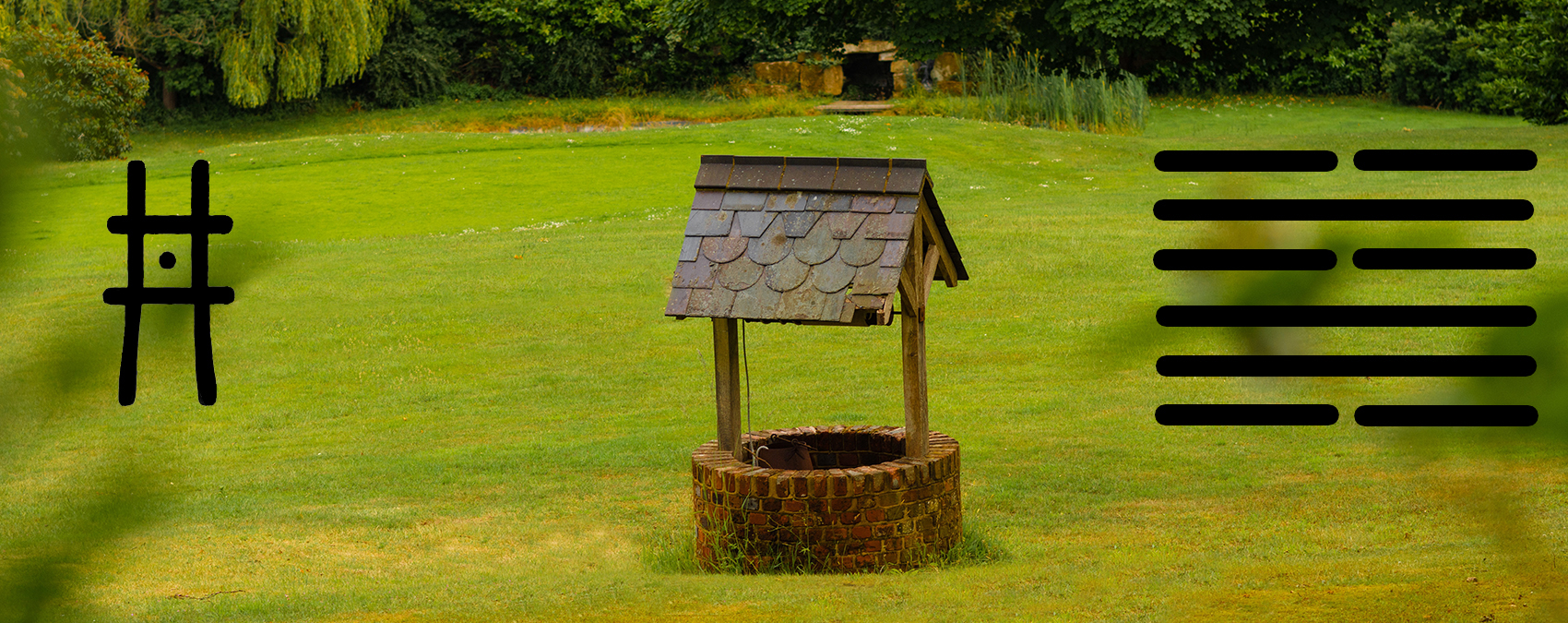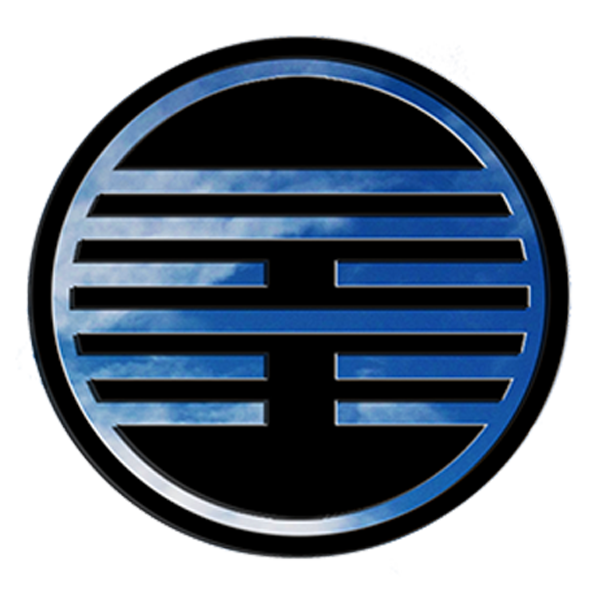Water above – Wind (Wood) below
The Chinese name of this hexagram is Jing which translates to well, source, center of social activity. It is said the image of a well can be seen in the hexagram lines, Water over Wood (Wind) indicating the lowering of a wooden bucket into well water. The well became the symbol for a source of replenishment. An additional image may be noted: the roots of trees or plants reach down to draw water up from the ground to nourish themselves. Another title for this hexagram is The Source. Because a well is a public source of replenishment, it also came to symbolize the vital importance of people coming together in a shared space, working together in interactive relationships to protect and maintain their resources.
Breaking down the symbolism of the 3-line trigrams helps with understanding the ancient teachings:

When trigram Wind is below (the bottom 3 lines in image below right), it references the inner realm of the person or situation. Wind gently and relentlessly carries the patterns of influence which affects all things, moving them toward their true nature. Potential, creativity and inspiration are made available from this inner realm, then shaped as it is moved up through trigram Water, the outer environment.
Trigram Water is on top of trigram Wind as shown in the top 3 lines of the hexagram (below right). One can draw from Water without depleting it because Water is in total alignment with (and passes on) the inexhaustible source of universal law. Because Water holds the directive patterns of the universe, it provides creatures and creations with knowledge of the structure of their unique hereditary configurations, even though it has no particular shape of its own.
The ancient ideograph is on the upper left portion of the image below. In ancient China land was divided into 9 parcels and belonged to the lord or governing body. The central portion, which had a well, was worked by the families who inhabited the 8 other parcels and the proceeds were turned back to the lord. When the family members had finished work on the central portion, they were allowed to work their own land. This was successful for everyone and villages sprung up. When the workers got exhausted, they could replenish themselves with neighborly conviviality as they drank the water from the well.

In summary: The image of The Well provides a wealth of symbolism within its simple concept. There is a time-worn comfort found in returning to The Well over and over as an unchanging and ever-present resource. It is the one thing that does not move or change as people revolve in and out around it. The Well became a social center within the lives of human tribes where they gathered as a place of refreshment, but also to bond in companionship, common goals and cooperation. To replenish, people must go to a source and The Well provides the connection to the life-giving replenishment, symbolized by the water. Sometimes the replenishment is spiritual comfort, friendship, a feeling of connection with the world or the motivation to tap into your own resources. This is a communal endeavor which is impossible for one person alone to sustain. The Well also shows there will always be the need for maintenance, a way to keep connection to the supply in good working order. If you are a leader or head of the household, you need to ensure you are connected to your own source of personal replenishment and learn how to employ, direct and guide others to work together and assist the whole.
Following are a few ideas for interpretations of each line:
Line 1 – The ancient diviners make mention of muddy or stale well water which even animals or birds will not drink from. The point Is, there is an aspect of this situation which is not being attended to and has become stale or stagnant. It is not beyond repair, but in order to obtain nourishment, there must be a sincere and patient effort to locate the problem and make repairs.
Line 2 – References to a well in which the water is still clear enough, but the well is not being maintained and is aging fast, nor is the water being used. Take a close look at how or whether you are appropriately using your talents, attending to the maintenance of your chosen path in life and connecting with others for mutual support.
Line 3 – The well water in this situation is clean but not used, which causes one’s heart sorrow. Your resources are valuable, but not being employed, so the reasons must be sought out. It could be fear, it could be you have not considered all your options, it could be old defensive patterns have taken you over. Trust yourself and look for impediments which you may have been missed.
Line 4 – Wells need to be relined periodically in order to maintain their integrity. Gathering from this image, the ancient diviners saw this as an analogy for a need to restructure, organize and work on repairs. During this reconstruction period, access is temporarily blocked. This is a long-term project, but well worth putting in the time and effort.
Line 5 – Pictured here is a well with clear, cold water (capable of providing nourishment) and from this image it is apparent this is a good situation. When you possess a clear mind and a trustworthy character internally, this is reflected in success in the outer world. Make sure your communications are clear and focused.
Line 6 – An image of a well without a lid is an analogy of you being a dependable source of replenishment for others. The well does not need a lid because the internal and external have merged, enabling this ability to share freely. You have what you need to comprehend the situation and experience good fortune.
